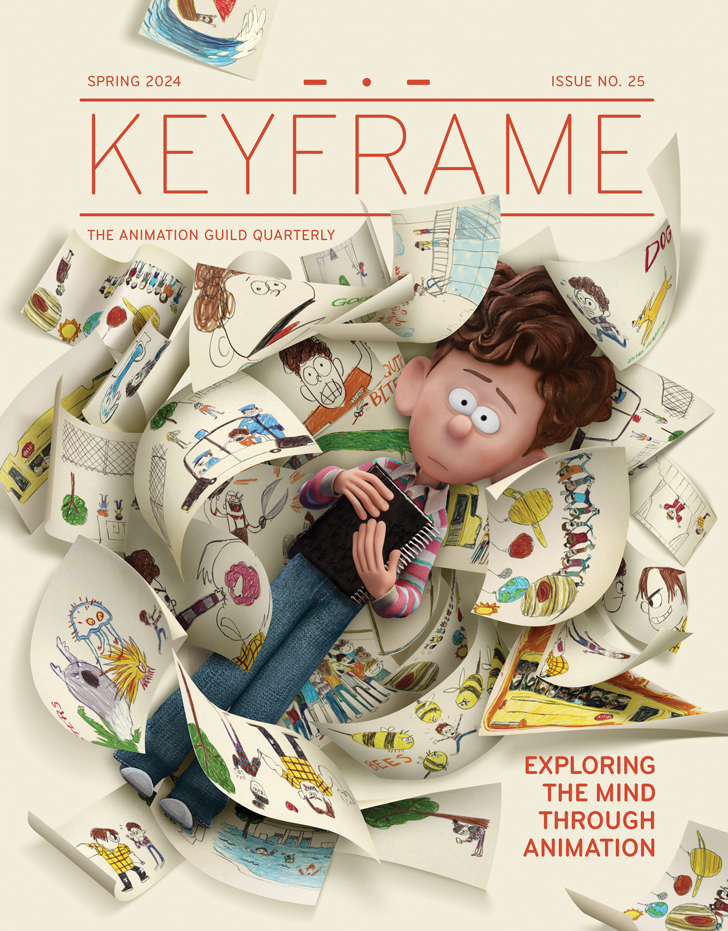
Be Prepared
When The Animation Happy Hour team started out, they didn’t plan ahead at all, according to Garrett Lewis: “It caused the episodes to kind of spiral and peter out.” They now create an outline “so we at least have a roadmap before we record.”
Prep Your Guests
Katie Low recommends sending questions to guests in advance, and letting them know they can take breaks and re-record sections when necessary: “All of this helps to put our guests at ease and have as natural a conversation as possible.”
Go with the Flow
Kendall Michele Haney also uses an outline but says: “Don’t feel pressure to stick directly to it. Make sure you go with where the conversation takes you naturally.” Listen to your guest, she suggests, rather than think ahead to the next question you’re going to ask.
Know Your Audience
Because Cassie Soliday’s target audience ranges from juniors in college to those a few years into the industry, she anchors her podcasts on relevant phases of the artists’ journey. Ben Girmann suggests taking this one step further and encouraging listener engagement. When taking questions from the audience, he and his partners give a shout-out to show that they value their listeners’ opinions.
Go Deep
Many podcasts tend toward career highlights, but Soliday tries “to balance that out by also discussing the struggle and resilience needed to build that highlight reel.” If guests are comfortable having the conversation, she addresses darker moments of the journey like uncertainty, depression, and anxiety. While working in animation is fun, it’s also hard work, and she wants her audience to be prepared to tend to their own wellbeing.
Talk It Out
“We work in an industry where subjectivity is baked into the fabric of almost everything we do,” says Girmann, “so I love when we can get a few different opinions on a particular subject and talk it through on the podcast.” He feels that this approach offers listeners a glimpse into the day-to-day nature of working in the industry.
Be Realistic
Lewis warns against over-promising a release schedule that you can’t deliver. “Don’t make it a second job,” adds Low. “When we started we were really intense about posting twice a week on every single social media platform.” It was too much work, and now they focus on keeping the process as fun as possible. As Soliday notes, “There are a handful of animation podcasts out there, and I’m grateful for those that post regularly as well as every once in a while. Give what you can, when you can. It’s [about] quality, not quantity.”
Know Your Worth
“Don’t be too hard on yourself,” Haney says. “You either started this as something you thought would be fun, something you wanted to be a (free) resource for people, or both—so just keep that as your focus.” Soliday adds, “Whether you have one or 100K+ listeners, something YOU say or make can improve someone’s day or level up their knowledge to help them get through their current or upcoming hurdles on their creative journey.”
Avoid Perfection
For the editing process, Haney feels that it’s okay to leave in some “ums” and awkward chatter because it helps the podcast feel real. She says she was too precious with early episodes, and now that she doesn’t worry about perfection, it saves her time, not to mention the pain of always overthinking things.
Spread the Word
One way Haney promotes her podcast is to make one-minute snippets of each episode to share on social media the day before the episode airs, “to give people a taste of that episode [and] guest so they become interested in listening to the full thing.” She recommends the website Headliner, which she says will do a lot of the work for you.







.png)